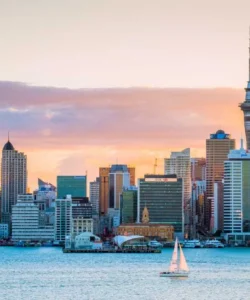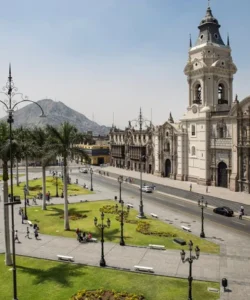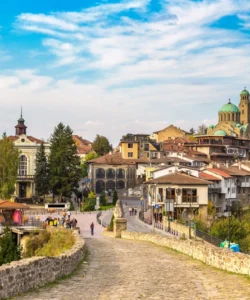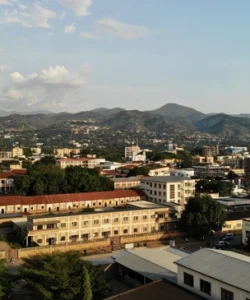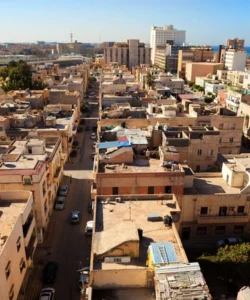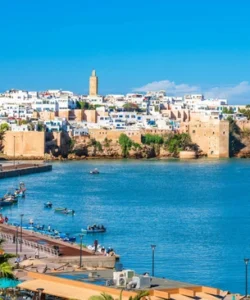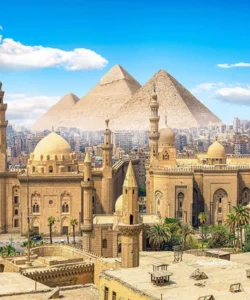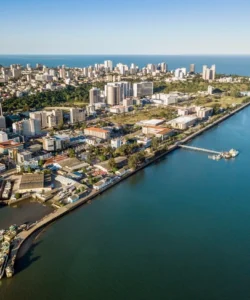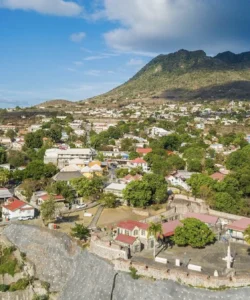Ireland, often called the “Emerald Isle” for its lush green landscapes, is a captivating destination rich in history, culture, and natural beauty.
Area & Population:
The island of Ireland has an area of approximately 84,421 square kilometers (32,595 square miles). The Republic of Ireland, which covers about five-sixths of the island, has an area of 70,273 square kilometers (27,133 square miles). As of 2025, the population of the Republic of Ireland is estimated to be around 5.12 million.
Language:
The two official languages of the Republic of Ireland are Irish (Gaeilge) and English. While Irish is the national and first official language, English is widely spoken and used in most government and business affairs.
Currency:
The currency used in the Republic of Ireland is the Euro (€).
Religion:
According to the 2022 census, the majority of the population in the Republic of Ireland is Catholic (approximately 69%). Other religious groups include the Church of Ireland (Anglican), Muslim, Orthodox Christian, and various other Christian denominations, while a significant portion identifies as having no religion.
Capital & Major Cities:
The vibrant capital city of Ireland is Dublin. Other notable cities and towns to visit include:
- Galway: Known for its vibrant arts scene and traditional Irish music.
- Cork: A lively city with a strong culinary reputation.
- Killarney: A popular tourist town surrounded by stunning natural scenery, including Killarney National Park.
- Belfast (Northern Ireland): The capital of Northern Ireland, offering a different cultural experience.
- Limerick, Waterford, Kilkenny, Westport, Kinsale, Adare.
Attractions & Wonders:
Ireland boasts a wealth of attractions, from ancient historical sites to breathtaking natural wonders:
- Cliffs of Moher: Iconic sea cliffs offering dramatic views of the Atlantic.
- Giant’s Causeway (Northern Ireland): A UNESCO World Heritage site with unique basalt columns.
- Guinness Storehouse (Dublin): A popular visitor attraction exploring the history of Guinness beer.
- Blarney Castle & Gardens (and the Blarney Stone): Famous for the Blarney Stone, said to grant the gift of eloquence.
- Ring of Kerry: A scenic driving route showcasing the rugged beauty of County Kerry.
- Newgrange: A prehistoric monument older than the pyramids of Egypt.
- Skellig Michael: A remote island with a well-preserved early Christian monastery (featured in Star Wars).
- Kilmainham Gaol (Dublin): A former prison that played a significant role in Irish history.
- Trinity College Dublin (and the Book of Kells): A prestigious university home to the famous illuminated manuscript.
- National Parks: Killarney National Park, Glenveagh National Park, Wild Nephin National Park.
Architecture:
Irish architecture showcases a fascinating blend of styles spanning millennia. You’ll find:
- Prehistoric and Early Christian: Remains of Stone Age structures and monastic sites like Clonmacnoise.
- Norman and Anglo-Irish Castles: Numerous ruined and intact castles dot the landscape (e.g., Bunratty Castle, Kilkenny Castle, Dublin Castle).
- Georgian Urban Buildings: Elegant red-brick townhouses are prominent in Dublin.
- Palladian and Rococo Country Houses: Grand estates showcasing exquisite design.
- Gothic and Neo-Gothic Cathedrals: Impressive religious structures like St. Patrick’s Cathedral and Christ Church Cathedral in Dublin.
- Traditional Thatched Cottages: Charming whitewashed cottages found in rural areas.
- Modern Architecture: Contemporary designs can be seen in cities, particularly Dublin (e.g., Samuel Beckett Bridge, Convention Centre Dublin).
Roads:
Ireland has a well-developed national road network, including motorways, national primary, and national secondary roads. Transport Infrastructure Ireland (TII) is responsible for the planning, construction, and maintenance of these roads, aiming for efficient and safe travel. Road conditions are generally good, facilitating comfortable driving for tourists.
Hotels & Accommodation:
Ireland offers a wide range of accommodation options to suit every budget and preference, from luxurious resorts and spa hotels to charming boutique stays, serviced apartments, and cozy guesthouses. Popular areas for hotels include Dublin, Galway, Killarney, Cork, and various towns along the Wild Atlantic Way.
Restaurants & Cuisine:
Irish cuisine is hearty, wholesome, and increasingly celebrated for its fresh, local ingredients. Traditional dishes often feature potatoes, cabbage, and various meats. Must-try dishes include:
- Irish Stew: A classic, comforting stew typically made with lamb or mutton, potatoes, and onions.
- Colcannon & Champ: Mashed potato dishes with added greens (cabbage/kale for colcannon, scallions for champ).
- Full Irish Breakfast: A substantial meal with sausages, bacon, eggs, black and white pudding, and more.
- Dublin Coddle: A traditional dish often made with sausages, bacon, potatoes, and onions.
- Bacon and Cabbage: A simple yet delicious comfort food.
- Seafood Chowder: Especially popular along the coast, featuring fresh local seafood.
- Boxty: Irish potato pancakes.
- Irish Breads: Soda bread and brown bread are staples.
- Guinness Pie: A rich and savory pie often made with beef and Guinness stout.
Ireland also has a thriving restaurant scene, from traditional pubs serving hearty fare to fine dining establishments showcasing modern Irish cuisine and international flavors. Many restaurants focus on seasonal and local produce.


